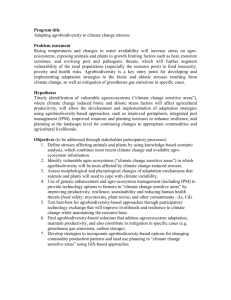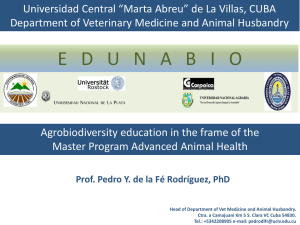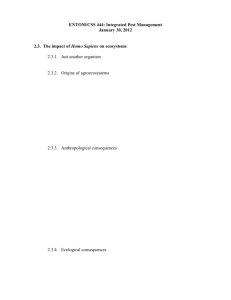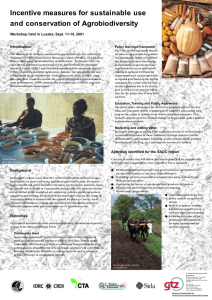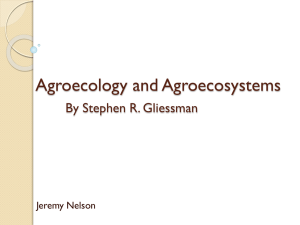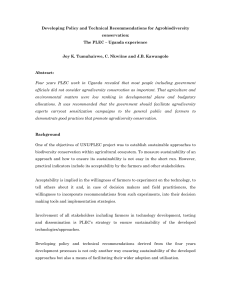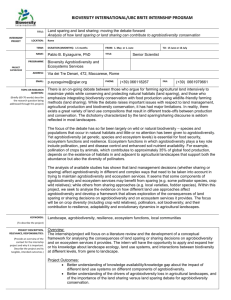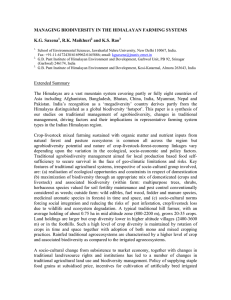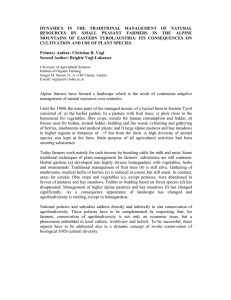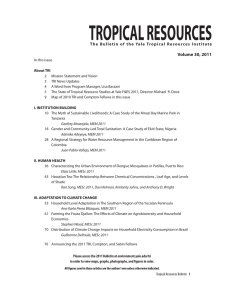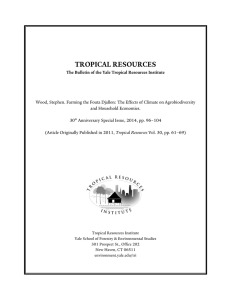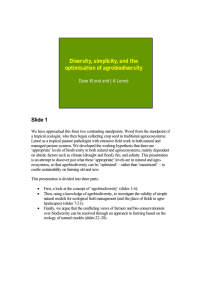DIVERSITY, SIMPLICITY, AND THE OPTIMISATION OF AGROBIODIVERSITY: INTRODUCTORY PAPER
advertisement
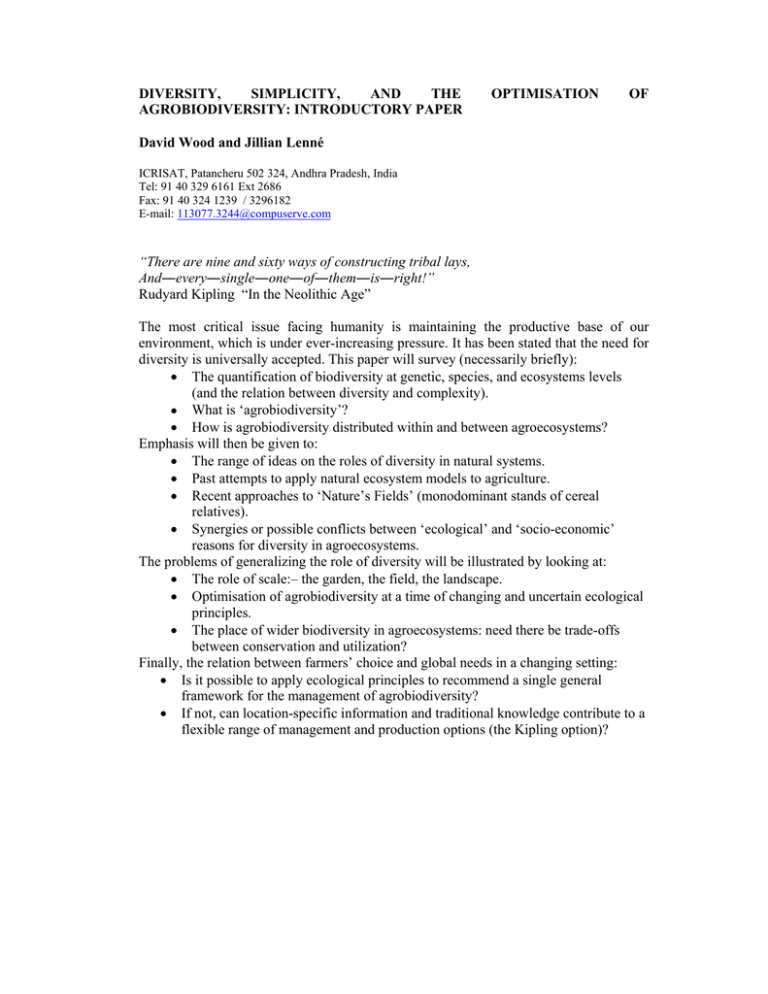
DIVERSITY, SIMPLICITY, AND THE AGROBIODIVERSITY: INTRODUCTORY PAPER OPTIMISATION OF David Wood and Jillian Lenné ICRISAT, Patancheru 502 324, Andhra Pradesh, India Tel: 91 40 329 6161 Ext 2686 Fax: 91 40 324 1239 / 3296182 E-mail: 113077.3244@compuserve.com “There are nine and sixty ways of constructing tribal lays, And―every―single―one―of―them―is―right!” Rudyard Kipling “In the Neolithic Age” The most critical issue facing humanity is maintaining the productive base of our environment, which is under ever-increasing pressure. It has been stated that the need for diversity is universally accepted. This paper will survey (necessarily briefly): • The quantification of biodiversity at genetic, species, and ecosystems levels (and the relation between diversity and complexity). • What is ‘agrobiodiversity’? • How is agrobiodiversity distributed within and between agroecosystems? Emphasis will then be given to: • The range of ideas on the roles of diversity in natural systems. • Past attempts to apply natural ecosystem models to agriculture. • Recent approaches to ‘Nature’s Fields’ (monodominant stands of cereal relatives). • Synergies or possible conflicts between ‘ecological’ and ‘socio-economic’ reasons for diversity in agroecosystems. The problems of generalizing the role of diversity will be illustrated by looking at: • The role of scale:– the garden, the field, the landscape. • Optimisation of agrobiodiversity at a time of changing and uncertain ecological principles. • The place of wider biodiversity in agroecosystems: need there be trade-offs between conservation and utilization? Finally, the relation between farmers’ choice and global needs in a changing setting: • Is it possible to apply ecological principles to recommend a single general framework for the management of agrobiodiversity? • If not, can location-specific information and traditional knowledge contribute to a flexible range of management and production options (the Kipling option)?
